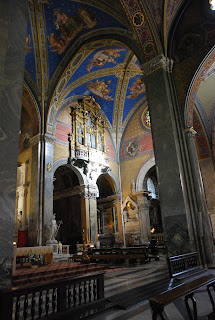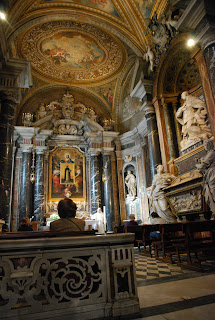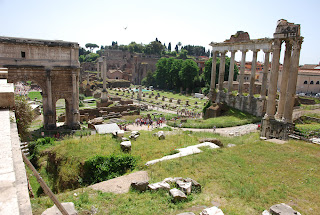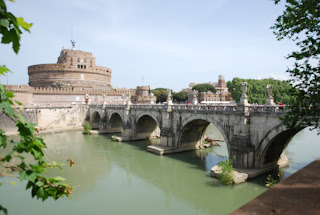The first three weeks of May, 2013, my intrepid travel buddy, Kit, and I went to Italy, traveling independently to Rome, the Amalfi Coast, Florence and Venice. It was, believe it or not, my first trip to Italy, so I was very excited to soak up all the history, architecture, and, yes, food.
As usual, if you want to see any photo in greater detail, just click it to enlarge. And keep clicking "Older posts" at the bottom of the page to continue on with the trip!
Our base in Rome was a basement apartment in the Arco degli Acetari, off the Campo dei Fiori, which means “field of flowers.” It originally was an open meadow, and when Christian pilgrims began coming through on their way to the Vatican, a bustling market developed which persists to this day. “Acetari” means vinegar, and this is the little complex in which the vinegar makers plied their trade. Mercifully, no scent remains!
Since the apartment was below ground, we had airshafts at either end for circulation and this one was decorated with a lovely mosaic lizard:
As usual, if you want to see any photo in greater detail, just click it to enlarge. And keep clicking "Older posts" at the bottom of the page to continue on with the trip!
Our base in Rome was a basement apartment in the Arco degli Acetari, off the Campo dei Fiori, which means “field of flowers.” It originally was an open meadow, and when Christian pilgrims began coming through on their way to the Vatican, a bustling market developed which persists to this day. “Acetari” means vinegar, and this is the little complex in which the vinegar makers plied their trade. Mercifully, no scent remains!














.JPG)








































